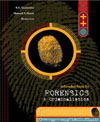 |  Introduction to Forensic Science and Criminalistics Robert E Gaensslen,
University of Illinois
Howard Harris,
University of New Haven
Henry C Lee,
University of New Haven
Feature Summary- The comprehensive look at laboratory analysis of physical evidence broadens and defines the student's understanding of forensic science and physical evidence.
- A consistent approach to the nature of forensic science practice helps the student understand the value of physical evidence and the proper approach to its collection and analysis (Chapters 1 and 2).
- Emphasis on the importance of scientific method and on the fact that a person need not be a scientist to use the scientific method makes students aware that the scientific method is applicable to many problems (Chapters 1 and 3).
- The depth of experience of the authors translates into fuller understanding of the field. In every chapter students get practical real world illustrations of the applications of forensic science to the investigation and prosecution of cases.
- The chapters on particular types of evidence--such as blood (9) or drugs (12)--all have a consistent internal organization: the subject matter and background are introduced and explained; strategies and methods for collecting and packaging that type of evidence are enumerated and explained; and finally, the methods used for the forensic examination of that type of evidence, the results that can be expected, and the strengths and limitations of the tests are discussed.
- Each chapter begins with an outline and a set of learning objectives to help the student instantly know the hierarchical structure of the chapter, and have a list of things to look for and grasp as the chapter is read.
|
|



 2008 McGraw-Hill Higher Education
2008 McGraw-Hill Higher Education